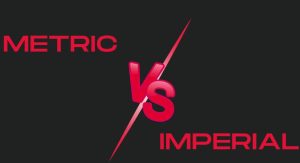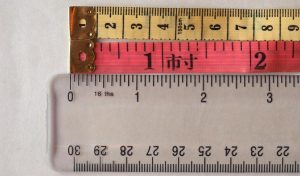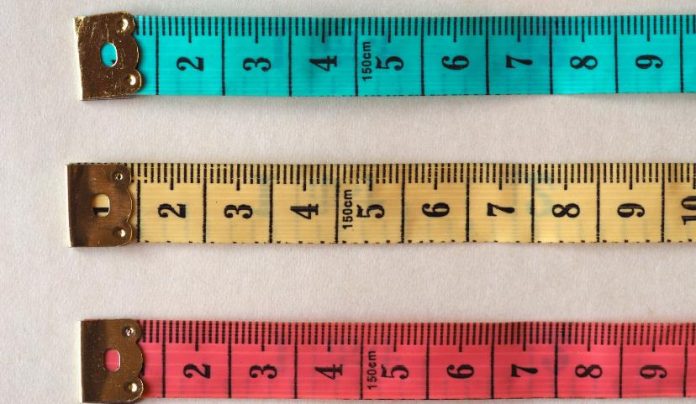Table of Contents
From meters, yards, and feet to grams, ounces, and pounds, there are so many different units of measurement, and with two completely different systems for measuring distance, weight, speed, and temperature, things can get even more confusing.
Have you ever driven in a foreign country and had no idea how fast you were going because the speedometer read kilometres-per-hour rather than miles-per-hour? Or tried to cook something that didn’t work out because the recipe gave the measurements in grams rather than cups? If so, it’s because you’re used to the imperial system for measuring, not the metric system.
To help clear things up, we’ve written this article. In it, we explain the difference between the imperial and metric systems, explore which one is better and reveal which countries use which system. We also list some typical metric-to-imperial conversions.
What’s the difference between the metric system and the imperial system?

The main difference between the metric and imperial systems is the type of units that are used to measure something.
Another of the other key difference is that metric units can be converted easily—by dividing or multiplying by ten—while converting imperial units is not as straightforward.
Continuing reading to find out more about the metric system vs. the imperial system.
What is the metric system?
Also known as the International System of Units or the Système International (SI), the metric system is based on the meter as the unit for length, the kilogram as the unit of mass, and the second as the unit for time.

While it was first discussed as far back as 1585. the metric system as we know it today was invented by French scientists in 1789. It was introduced to replace the extensive units of measurement that were previously used in France, standardizing the way things were measured.
Now, the metric system is not only used in France but all over the world.
Some of the units of measurement used in the metric system are:
- Meter
- Kilogram
- Ampere
- Mole
- Candela
- Kelvin
- Celsius
What is the imperial system?
Some of the units of measurement used in the imperial system are:
- Inch
- Foot
- Yard
- Mile
- Ounce
- Stone
- Pound
- Ton
- Pint
- Quart
- Gallon
- Fahrenheit
There are two types of imperial systems:
The British Imperial System

From 1824 to 1965, this was the official measurement system used in the United Kingdom. It was developed to unite the country by having one standardized way of measuring, rather than multiple local measurement systems, whereby units like pound and foot meant something different, depending on where you were.
The United States Customary System
While the US imperial system is based on British imperial units, there are some differences between the two:
- The British stone is not used in the US
- A US liquid pint is 0.473 cubic decentimeters
- A US dry pint is 0.551 cubic decimeters
- The US gallon is based on a 231-cubic-inch wine gallon
Is the imperial system better than metric?
Because it is used almost universally, it can be argued that the metric system is the better measurement system because it is understood in the vast majority of european cities.
Another reason why it could be argued that the metric system is better is that it’s easier to convert between the measurements because they all relate to each other.

Additionally, cups measurement —while they may not be strictly part of the imperial system—are usually the units of measurement given in recipes. However, they aren’t as accurate as grams. In a cup, the amount can vary depending on how tightly the ingredients are packed.
What countries are not metric?
Only three countries in the world don’t use the metric system of measurement.
These are:
- The US
- Liberia
- Myanmar
Why does the US still use the imperial system?
The US still uses the imperial system instead of the metric system, mainly due to time and money. At the beginning of the Industrial Revolution, the imperial system was used in manufacturing companies, meaning the machinery that was used was developed to measure in imperial units, and products were made to feature them.

Changing over to the metric system would be expensive and time-consuming for both big and small businesses, which would need to spend a great deal of money to make the switch and American citizens, who would have to take the time to familiarise themselves with the new measurements. (That said, the metric system is taught in secondary schools alongside the imperial system, and many measurement tools and commercial products show the measurements for both systems.)
Some also argue that the US should keep the imperial system to set the country apart from the rest and symbolize its status as a leader, not a follower.
Converting metric units to imperial units
You may find yourself in a position where you need to convert metric units to imperial units—when following a recipe, for example.
So, to help you out, here are some typical metric-to-imperial conversions:
| Metric unit | Imperial unit |
| 1 liter | 33.814ounces |
| 3.785 liters | 1 gallon |
| 29.573 milliliters | 1 ounce |
| 0.473 liters | 1 pint |
| 0.946 liters | 1 quart |
| 0.454 kilogram | 1 pound |
| 1 kilogram | 2.2 pounds |
| 1 gram | 0.035 ounces |
| 28.350 grams | 1 ounce |
| 0.907 metric ton | 1 short ton |
| 0.405 hectare | 1 acre |
| 0.093 square meter | 1 square foot |
| 2.590 square kilometers | 1 square mile |
| 30.48 centimeters | 1 foot |
| 1 centimeter | 0.39 inches |
| 2.54 centimeters | 1 inch |
| 1.609 kilometers | 1 mile |
| 0.9144 meter | 1 yard |
| 1 meter | 39.37 inches |
| 130 degrees Celsius | 250 degrees Fahrenheit |
| 150 degrees Celsius | 300 degrees Fahrenheit |
| 190 degrees Celsius | 375 degrees Fahrenheit |
| 200 degrees Celsius | 400 degrees Fahrenheit |
| 230 degrees Celsius | 450 degrees Fahrenheit |
Summary
The main difference between the metric and imperial systems is the type of units that are used to measure something. For example, the metric system uses meters, kilograms, amperes, moles, candelas, kelvin and Celsius, while the imperial system uses inches, feet, yards, miles, ounces, stones, pounds, tons, pints, quarts, gallons and Fahrenheit.
It can be argued that the metric system is the better measurement system because it is understood in the vast majority of places. It’s easier to convert between the measurements because they all relate to each other and while they may not be strictly part of the imperial system, cups are not as accurate as grams.


